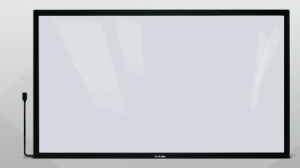Multi Touch Overlay – Important Features To Consider

The many benefits of using a multi touch overlay to improve the performance of an ordinary monitor screen is just beginning to be realized. That may be because many people will only feel confident using real multi-touch screens; then again, how many people know what a multi touch overlay is?
In the simplest terms, a multi-touch overlay is a device which attaches to ordinary monitor screens to give them multi-touch capability. The rationale for using touch screen overlays instead of just replacing ordinary monitors is to save on expenses; a multi touch overlay is significantly cheaper than a new touch screen monitor.
TECHNOLOGY: There are quite a few different technologies used, with Infrared (IR) and projected capacitance (ProCap) being the most popular. Each has its own pros and cons.
Projected capacitance overlays have robust constructions and are water and dust resistant. They are multi-touch capable and recognize smooth gestures. They are not affected by most interference; not even solid objects placed on the screen. However, they are not available on larger screens.
IR Touch overlays can be used in larger screens and are relatively inexpensive. They provide good response to multiple touches and smooth gestures. They are thin, light and it is easy to create custom sized screens. Bright light hampers proper function and solid objects or other obstruction will cause occlusion.
Other technologies are also used to a lesser degree, so it may help to contact a few manufacturers, or organizations like the Information Technology Industry Council for more information.
Borderless Screens: There are certain applications in which a borderless touch screen is more appropriate, such as in high-end showrooms and exhibitions; examples include luxury car or jewelry exhibitions. In such cases, IR touch technology will not apply because the IR emitters and sensors need to be housed at the edges of the screen creating a bezel of sorts.
Economy: Barring any clash with the requirements of use, IR touch technology offers a significantly lower price than projected capacitance.
Larger Screens: Projected capacity overlays are available in a wide variety of sizes, with the higher end of the range usually topping out at about 80”. But if you need really large screens, those using IR technology may be the answer.
Outdoor Applications: Touch screens using IR technology are sensitive to bright lights. While they may work in some shaded conditions outdoors, they will not work well in direct sunlight. One outdoor location they may be able to work well in is in a covered walkway. Otherwise it is best to use technologies not sensitive to light such as projected capacitance.
Response Time: When used in business applications, especially in front of potential clients, touch screens need to be as impressive as possible. IR technology screens offer the fastest response times; <10ms is common. However 20ms works just fine.
Ease of Installation: Most overlay screens are delivered ready for use, however some IR touch overlays come in kit for; that is ok, so long as assembly is easy and instructions are clear.
The features you need your multi touch overlay needs to have depends on your requirements and the conditions under which they need to be operated. If you can properly define them, you can choose the most appropriate overlay in terms of quality, economy and desired features.
